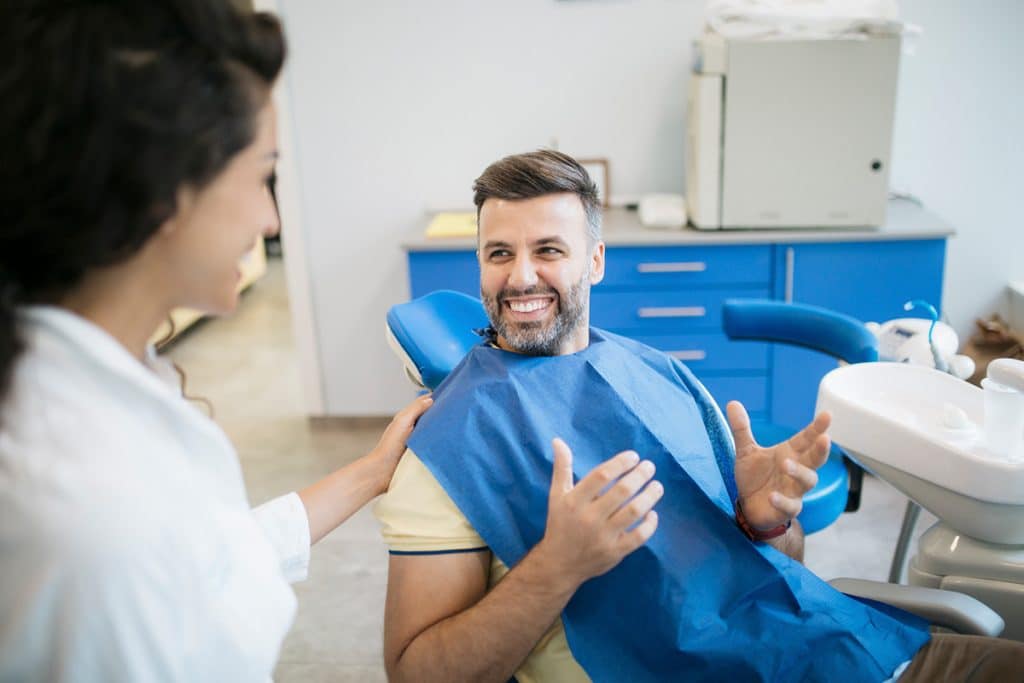Are You Properly Brushing Your Teeth?

Most patients believe they brush their teeth well, but their dentists and hygienists frequently have tips for improving their technique.
Many patients skimp on the basics of tooth brushing, endangering their oral health. This blog will explain proper tooth brushing in detail, sharing ideas to help you prevent gum disease and tooth decay while maintaining your beautiful smile.
How to Brush Your Teeth
Step 1: Selecting Your Tools
Use a toothbrush marked "soft" for adults or "extra soft" for children. Anything harder could damage delicate gum tissue. An electric toothbrush can help if you struggle to achieve plaque removal.
Ensure you replace your toothbrush at least every three months or when the bristles become worn. You can tell whether a toothbrush is too worn by checking the bristles. Reach for a new brush if they begin to separate or splay outward. Your brush may also have fading markings that let you know when it is becoming too worn to use.
Use an ADA-approved fluoride toothpaste unless your dentist recommends something else. Fluoride is critical for patients of all ages, from infants through adults.
Step 2: Set a Timer
Many patients brush for 30 seconds or less and do not have adequate time to remove plaque and food residue from all tooth surfaces. Ensure you brush for at least 2 minutes, whether you use an electric or manual toothbrush.
Step 3: Brushing
Keep your toothbrush at a steady 45-degree angle to your gums. This position enables the toothbrush to focus on the area of the gums where they meet the teeth. Use a circular motion.
Ensure that you brush both the teeth and the gums. Be gentle on your gums; do not press the brush down hard.
Divide your brushing time equally between each quarter of your mouth: upper and lower right, then upper and lower left. Spend 30 seconds in each area. If you divide your teeth into quadrants, brushing for two minutes will not seem long.
Take a few seconds to brush your tongue as well. Tongues harbor bacteria and food odors that can cause bad breath.
Check your gums when you have finished brushing. They should not be swollen or red. If you notice these issues, tell your dentist at your next exam. You may have gum disease.
Step 4: Flossing
Once daily, follow your brushing routine with flossing. Flossing removes food and plaque that a brush can't reach. Even if you brush with a "floss action" toothbrush, actual floss will do a better job.
Step 5: Rinsing
Rinse your teeth thoroughly using water. Clean your brush as well. You may ask your dentist about following up with a fluoride or antibacterial mouth rinse.
Home Care Makes a Difference
No matter whether you visit the dentist twice a year for cleanings and exams, you will not be able to achieve improved oral health without paying close attention to your brushing and flossing routine. Fortunately, brushing and flossing take only minutes from your day and have a measurable impact on your oral and overall health.
If tooth decay and gum disease develop, they can lead to heart problems, high blood pressure, diabetes, preterm birth, and a higher risk of tooth loss. When considering its benefits, taking the small, manageable step of brushing and flossing each day is easy.
Frequently Asked Questions About Home Oral Care
How often should I brush my teeth?
Ideally, brush after each meal and snack, especially if you eat anything acidic, sugary, or starchy. Most people find brushing twice daily more manageable with their schedule but try brushing more frequently if you are at home.
What happens if my gums bleed when I brush my teeth?
If your gums bleed, you may have gingivitis, the first stage of gum disease. Don't panic if you notice signs of gingivitis; when caught in time, this condition is reversible. Stepping up your home care routine by paying close attention to brushing and flossing and visiting your dentist can start your gums on the path to recovery.
Call Fort Collins Dental Center
If you need preventive dental services or have questions about home oral care, please call our Fort Collins, CO office at 970-482-1477 today. We can schedule an appointment for a cleaning and comprehensive exam where our dentist and hygienist can share tooth brushing techniques you may have missed.
